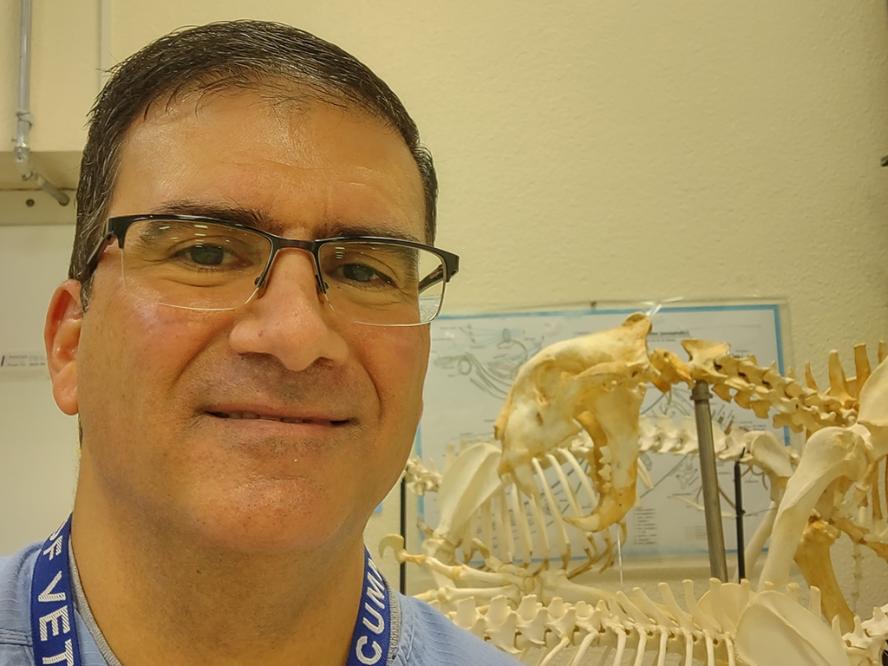-
About
- Leadership & Faculty
- News & Events
-
Academics
- Graduate
- Advanced Clinical Training
- Continuing Education
-
Student Life
-
Research
-
Hospitals & Clinics
- Emergency Care
- Hospital Services
-
Community Outreach
- Volunteer
Helping Students Become Go-To Specialists
Rick Rego brings a coastal network into the lab and inspires

“I can’t just focus on one thing; I have so many interests,” says Rick Rego, a lab coordinator in the veterinary teaching laboratory at the Cummings School—and that’s a good thing for students.
Of the more than 80,000 patients that come through the Grafton campus each year, the majority are common companion animals like cats and dogs, large animals like horses and cows, or native birds. Rego, however, has a track record with marine wildlife, bringing diverse species expertise into the classroom and opening new career paths for future veterinarians.
Rego got his start in animal care at an agricultural school and went straight into the workforce after graduation, studying poultry genetics for a research farm. On the side, he worked with Massachusetts’ Department of Fish and Game, researching amphibians, and conducted surveys on wildlife like box turtles for environmental firms.
“I’ve always had a background and interest in science and animals,” he says. “I remember one time I was online reading about a stranding on the Cape and it cited the Cape Cod Stranding Network. They were looking for people to help out.”
By this time, Rego was a full-time firefighter, but he volunteered to keep expanding his wildlife experience and for almost two decades was the go-to guy for stranded animals from Plymouth, Massachusetts to the Rhode Island coast.
Marine rescue networks exist all along the Atlantic coast, and every “strand”—a marine animal stranded on the beach—requires an investigation of measurement, photographs, tissue collection, and, often, a full autopsy that is entered into a database to help track everything from sea populations to the effects of climate change.
Rego has been called on a day or two’s notice to help with all kinds of strands: seals being the most common, and a whale in Newport being the most memorable.
He loves bringing his marine mammal material into the lab. “There’s a lot of neat comparative material,” he says. For instance, in the fall, Rego did a section comparing the small animal thorax to that of dolphins: “In a small animal, the muscles terminate on the pelvis, whereas the dolphin’s continues into the fluke or tail,” he shares. “Students really like seeing something different in the lab.”
Skulls, respiratory systems, reproductive systems—the comparisons are endless. With anatomy in the curriculum for the first full year of a Cummings veterinary education, Rego is able to build relationships with students and bring new collections into the space that are tailored to their many interests.
“That way if they go into the workforce and someone brings them a bone, they can debunk it as human and identify it more readily. They can become the go-to specialist on top of their normal veterinary duties. It’s a win-win for the school, the students, and the community.”